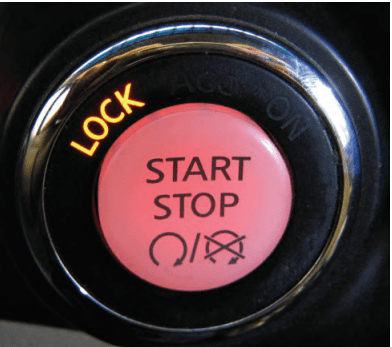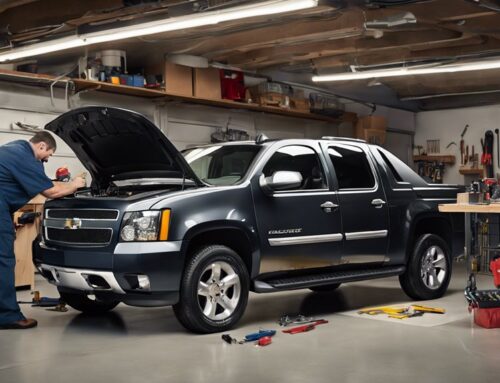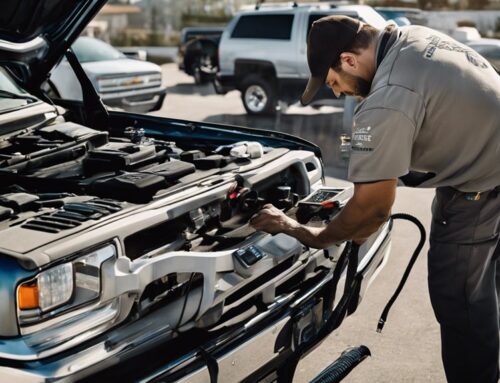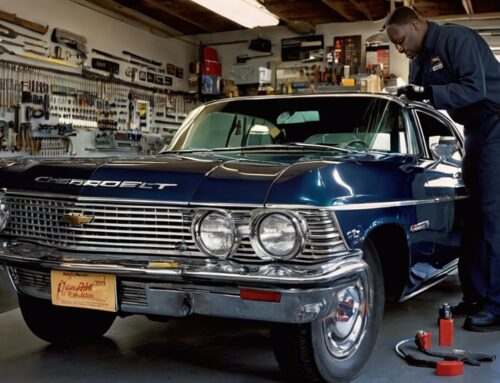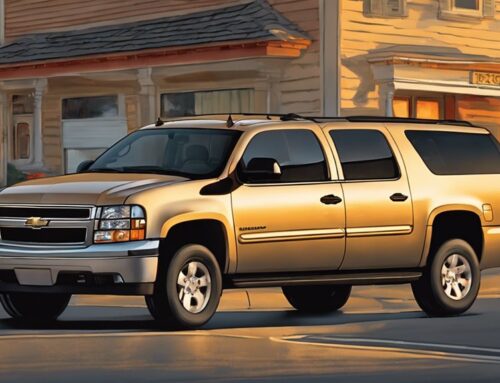What is an I-Key System?
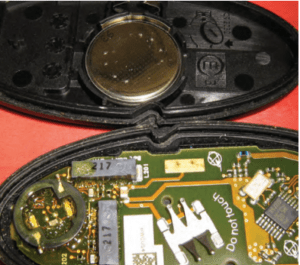
An I-Key system is a passive entry, starting, and vehicle customization system. A driver can unlock the doors and trunk, start the car, and restore memorized seat and mirror adjustments without ever removing the I-Key from his pocket. Typically, each registered key can have a separate set of user preferences stored in the BCM, which can either be memorized during use or programmed via the CONSULT.
Components of an I-Key System I-Key Nissan
The I-Key looks similar to a standard keyless entry remote. It typically will have lock, unlock, and trunk buttons. However, unlike a standard keyless entry system, the user does not need to press these buttons to enter the car. The I-Key responds to ID requests issued by interior or exterior key antennas. Each I-Key stores its unique ID number and a vehicle ID number. The I-Key is powered with an internal 3V battery, and
cannot receive or transmit without power. The most common “failure” of the I-Key is the battery. Many Nissan and Infiniti cars have a handy low battery warning indicator on the dash to alert the driver (or technician) that the battery needs to be replaced. If either the I-Key battery or the vehicle’s 12V battery goes dead, there is a mechanical key insert in the I-Key that will allow emergency entry. Typically, up to four I-Keys can be registered to a vehicle, and once an I-Key has been registered to a particular vehicle, it cannot be registered to another, just as once a conventional key is cut, it cannot be cut again
I-key Nissan Exterior Key Antenna
There are typically three exterior key antennas: one for the driver’s door, one for the passenger front door, and one for the trunk/hatch area. Each has a range of about three feet. The key antennas broadcast a request periodically. It asks something like, “Is there an I-Key within my detection zone?” The antennas will continue this request over and over.
If a key is detected, the antenna will ask, “What is your ID number?” If the ID matches, access will be granted. If no keys are detected for a while, the request will become less frequent to save power. If no keys respond for a very long time, the key antenna will go to sleep until the door handle is touched.
Interior Key Antennas
Interior key antennas work just like the exterior key antennas. There are usually three detection zones: the driver’s seat, the front passenger’s seat, and the trunk/hatch area. The interior antennas don’t start to cycle until they either receive a signal from the door switch, or a key is authenticated after communicating
with the exterior key antenna (depending on the vehicle).
There’s no point in using battery power to cycle the interior antennas until they are needed. If a driver enters the car, but does not try to start it for quite some time, the interior antennas will stop cycling to save power, but once the Push Button Ignition Switch is pressed, the antennas will resume cycling again.
Push Button Ignition Switch
The Push Button Ignition Switch (Start Button) and brake pedal switch are used to select the power mode, just like the ignition switch did (and does) on vehicles without I-Key systems. Like ignition switch-equipped vehicles, there are four modes of power:
1.OFF/LOCK
2.ACCESSORY
3.ON
4.RUN/READY
The Start Button is a redundant switch, capable of setting a code if one of its switches changes and the other does not. The Start Button is also an output, and indicates the power mode through the familiar ignition switch markings: LOCK, ACC and ON.
Assuming a registered key has been detected in the vehicle, a single press of the Start Button without stepping on the brake will switch the power mode to ACC.
If the button is pressed again, the power mode will change to ON. If the brake pedal is pressed and the Start Button is pressed again, the engine will start up (or READY on hybrid vehicles). It is possible (and typical) to bypass ACC and ON, and go straight from OFF to RUN/READY by stepping on the brake and pressing the Start Button after entering the vehicle.
What is NATS / NVIS?
The Nissan Anti-Theft System (NATS) or Nissan Vehicle Immobilizer System (NVIS) is an integrated anti-theft system that prevents the engine from
starting unless a registered key is used. Because the NATS logic built into the ECM, it’s virtually impossible to bypass. Traditional methods employed by auto thieves, such as forcing the ignition lock, or “hotwiring” the car won’t work on a Nissan with NATS/NVIS.
Which cars have NATS?
All vehicles built for sale in the U.S. must be quipped with an immobilizer system by model year 2007. However, several Nissan models have been equipped with the NATS immobilizer system since 1998
Do independent shops have access to immobilizer information and equipment?
Nissan North America supports the National Automotive Service Task Force (NASTF) in its effort to ensure the availability of OE level information and tooling to independent automotive service professionals.
Any independent shop can purchase the same information, training, and equipment used by Nissan dealerships. If you become a registered Vehicle Security Professional (VSP), Nissan will also provide access to immobilizer information, equipment, and reset codes.
What do you need to work on NATS systems
The first step is to become a Security Professional and obtain a Locksmith ID (LSID) number through the
AOLA (Associated Locksmiths of America). If your state requires a Nissan locksmith license, you’ll need to
become licensed in your state first, then apply to become a Security Professional. There will be a fair bit
of paperwork, fingerprinting, notarizing, and you’ll need to carry additional insurance.
Here is a brief summary of the steps. Check the
ALOA website for complete instructions.
1.Visit www.aloa.org/NASTFSDRMDocs/ and read all of the material carefully.
2.If your state requires a locksmith license, you’ll need to apply for and receive the license before sending the LSID Registry Application. Try a Google search for state name, locksmith & license, and you should find the information you need.
3.Purchase the required insurance.
4.Fill out the LSID Registry Application and User Agreement and provide the documentation requested. Once you’re licensed, you’ll need to purchase
equipment. At a minimum you’ll need a Nissan scan tool to do diagnosis and repair of NATS and related systems.
Nissan does not provide NATS support for J2534-1 tools. Only Nissan scan tools work with NATS.
If you also want to create and copy keys, you’ll need a key machine that supports code cutting and duplication.
Code cutting and duplicating keys
Nissan recommends the Kaba Ilco key cutting machine for cutting Nissan and Infiniti keys. These machines can be purchased through TechMate
www.nissantechmate.com, or directly from Kaba Ilco at www.kaba-ilco.com. Code cutting machines will allow you to copy existing keys, or cut a fresh key based on a key code obtained from www.nissan-techinfo.com or www.infiniti-techinfo.com
Nissan key Security System Types
There are four different types of access systems with NATS/NVIS:
• Type 4 uses a mechanical key with an RFID chip embedded in the head.
• Type 3 uses an Intelligent Key and a twist knob power mode selector that has the familiar feel of a mechanical key in an ignition lock cylinder. This system allows for passive entry and starting.
• Type 2 uses an Intelligent Key and a push button power mode selector. This system, found on the Infiniti M35 and M45, will passively adjust vehicle preferences, such as seat position, to individual drivers, in addition to passive entry and starting.
• Type 1 uses an Intelligent Key and a push button power mode selector. This system allows for passive entry and starting.
Nissan Key Types
There are currently two types of keys used with NATS systems: the traditional-looking mechanical key, and the futuristic Intelligent Key.
A NATS-equipped mechanical key can usually be identified by a small rectangle on the bottom of the key head. The key head contains a Radio Frequency Identification (RFID) transponder. Each RFID transponder chip has a unique value.
The RFID number is checked by the immobilizer system during the start-up sequence, and is compared to registered numbers stored in the ECM. If the key is registered, the security light will go out and the car will start. If not, the security light will blink and the car won’t start.
An Intelligent Key looks like an alarm remote, with lock, unlock, trunk, and panic buttons. The Intelligent Key also contains an emergency key insert that can be used to open the car in case the I-Key battery or vehicle battery goes dead.
Intelligent Keys are similar to the mechanical keys in that they also have and RFID chips with unique values.
However, they also have additional capabilities, such as passive entry and starting. This means a driver will be able to unlock and start the car without removing the key from his pocket.

